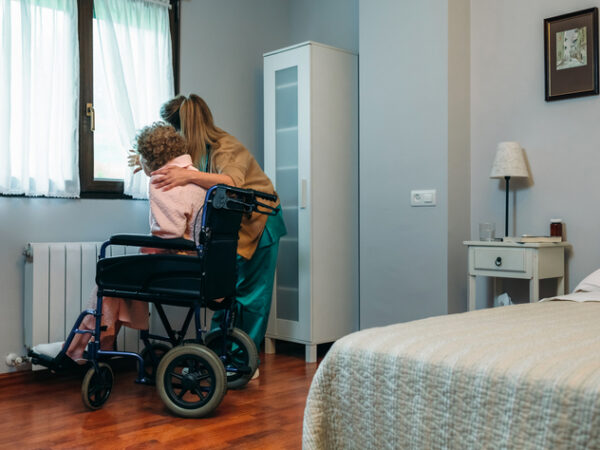When it comes to aging optimally, there’s no universal housing solution that will meet the needs of all older adults. While some active seniors with access to transportation and a strong friends and family support group can thrive aging in place, others who live more remotely in rural settings, or who no longer drive, would benefit from living in a retirement community. But many seniors stay in their family home long past the time it serves them, and spend much of their days alone, struggling to prepare meals, clean their house, manage stairs or climb into a shower which presents a serious risk for a fall.
As the adult children of aging parents will attest to, the worry elderly parents living alone will have a fall or a medical emergency and not receive help quickly can be maddening. Technology, while immensely helpful to support aging-in-place, can have its flaws. Some age-proofing tech can be expensive or difficult to operate, and older adults may not remember to charge or wear devices designed to keep them safe.
According to a recent Aging and Health Technology Watch blog post, the average age seniors move into assisted living is 85; and the majority of residents are elderly women who have been living alone. At this point, many families have struggled to honour the wishes of their loved ones by arranging for transportation, home health care, property maintenance, meal or grocery delivery and a host of other services. With a continuing shortage of home healthcare workers, there have likely been a number of late or no-show bookings, and a high rate of provider turnover.
Often hastened by a fall, or medication management issues, by the time many seniors are forced to make the move into assisted living, they are no longer able to enjoy many of the amenities. If the move had been made with care earlier, older adults would have spent more time sharing meals with others, socializing and enjoying recreational activities without the worry of managing their own daily needs or living in isolation. Going days without talking to anyone other than an overworked paid caregiver can lead to depression, worsening physical and emotional health, and cognitive decline.
Having the talk with aging parents about moving into an assisted living community is among the hardest discussions families will have with older loved ones. But if handled with care, it can become a positive and optimistic endeavour. It’s vital to include older adults in the decision-making process, and take their concerns into account by researching transportation, healthcare, social, and housing options. Bringing some cherished personal belongings can quickly make a new living arrangement feel familiar and cozy, and often seniors enjoy their new surroundings and opportunities for social interaction and activity so much, they wonder why they waited so long. Don’t forget to visit often! Many seniors stay in the family home longer than perhaps they should in an effort to provide a comfortable place to stay so loved ones will continue to visit.






Add Your Voice
0 Comments
Join the Discussion